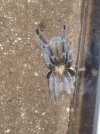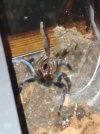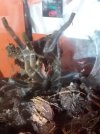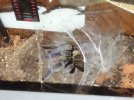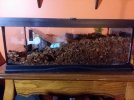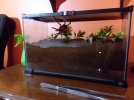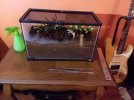A friend brought me a cobalt blue back from a reptile expo about three days ago. She seemed a little stressed but otherwise ok when I recieved her. She was in a decent sized plastic container but I decided to rehouse her in a 10 gallon tank and let her get acclimated. I put in a decent sized piece of bark in her tank as a hideaway which she almost immediately went into. I'm a bit worried though since she has gone in and walled herself off with webbing within the last 24 hours away from food and her water dish. I tried feeding her some pinhead crickets the following morning after I put her in the new enclosure and she wanted nothing to do with them. This combined with her webbing herself off worries me a bit. It's only been 3 or 4 days since I got her but I'd like to air on the side of caution and get some wisdom from folks who have more experience than me with tarantulas(which isn't much). Any thoughts or advice on the subject would be much appreciated.
Side note: not sure what sex it actually is as the seller said it was too small to tell yet. I'm just being hopeful it's a female referring to it as such.
Side note: not sure what sex it actually is as the seller said it was too small to tell yet. I'm just being hopeful it's a female referring to it as such.


